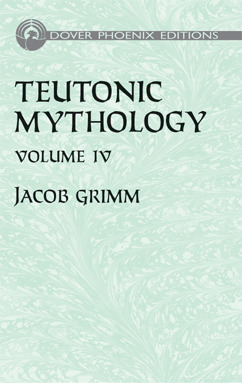
Part of Series
In this brilliantly informative masterwork, the great scholar Jacob Grimm (1785-1863) compiled and organized a vast amount of information on ancient rites, beliefs, deities, heroes, literature, statuary, temples, and much more, including the survival of the old gods and customs in modern place names, superstitions, games, idiomatic expressions, characters, and events in folk tales. The four-volume set VOLUME Introduction; God; Worship; Priests; Gods; Wuotan; Wôdan; Donar; Thunar; Zio; Frô (Freyr); Balder; Phol; Other Gods; Goddesses; Conditions of Gods; Heroes; Wise-women. VOLUME Wights and Elves; Giants; Creation; Elements; Trees and Animals; Sky and Stars; Day and Night; Summer and Winter; Time and World; Souls; Death; Destiny and Well-being; Personifications. VOLUME Poetry; Spectres; Translation; Devil; Magic; Superstitions; Sicknesses; Herbs and Stones; Spells and Charms. VOLUME Supplement (collected from Grimm's posthumous notes) to the text and the the author's Preface in Volume III; Appendix by the author; Anglo-Saxon Genealogies; Superstitions; Spells; Index. The most exhaustive compendiums of Germanic and Norse mythology and a milestone in the study of comparative mythology and religion, Teutonic Mythology still remains the definitive basis for research into the field. It is indispensable for students and scholars of folklore, cultural history, and literature.
Author

German philologist and folklorist Jakob Ludwig Karl Grimm in 1822 formulated Grimm's Law, the basis for much of modern comparative linguistics. With his brother Wilhelm Karl Grimm (1786-1859), he collected Germanic folk tales and published them as Grimm's Fairy Tales (1812-1815). Indo-European stop consonants, represented in Germanic, underwent the regular changes that Grimm's Law describes; this law essentially states that Indo-European p shifted to Germanic f, t shifted to th, and k shifted to h. Indo-European b shifted to Germanic p, d shifted to t, and g shifted to k. Indo-European bh shifted to Germanic b, dh shifted to d, and gh shifted to g. This jurist and mythologist also authored the monumental German Dictionary and his Deutsche Mythologie . Adapted from Wikipedia.
